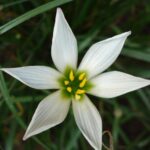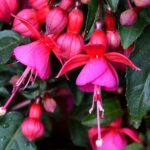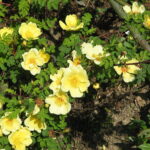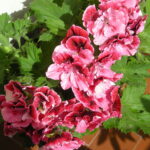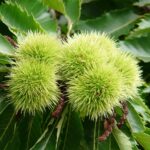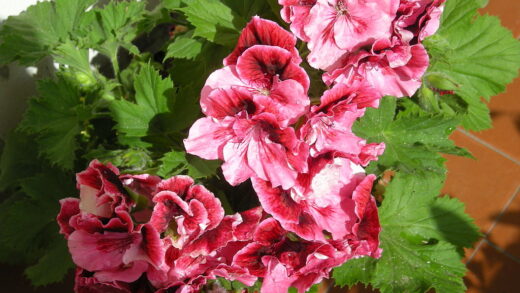Watering and fertilizing of the sweet chestnut
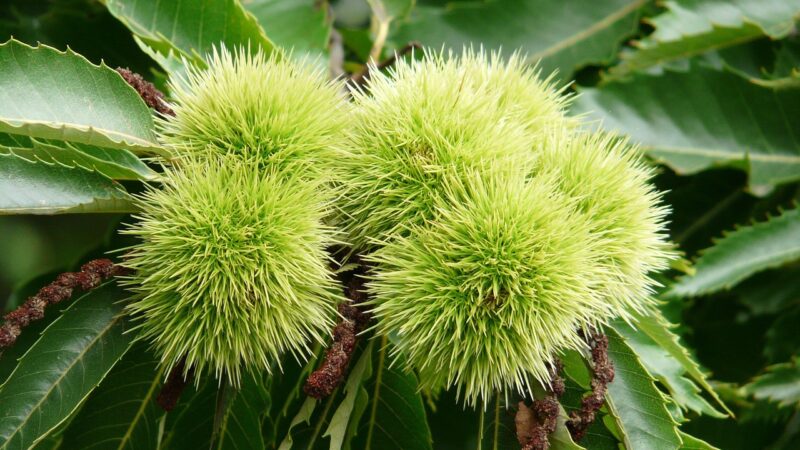
Providing the appropriate balance of water and nutrients is fundamental to cultivating a healthy and productive sweet chestnut tree. These two essential inputs are the lifeblood of the tree, directly influencing everything from its rate of growth and structural development to its ability to produce a bountiful harvest of high-quality nuts. Understanding the specific needs of the sweet chestnut and how those needs change with its age and the seasons is crucial for any successful grower. It is not simply about providing water and fertilizer, but about providing the right amount at the right time, in a way that the tree can most effectively utilize.
Water management for sweet chestnuts is a delicate balancing act, as the species is intolerant of both drought and waterlogged conditions. A consistent supply of moisture is critical, especially during the establishment phase of a young tree and the nut development period for mature, bearing trees. However, their roots require well-aerated soil, and excessive watering or poor drainage can quickly lead to fatal root rot diseases. Therefore, a successful irrigation strategy focuses on deep, infrequent watering that encourages a robust and far-reaching root system, making the tree more resilient and self-sufficient in the long run. This approach mimics natural rainfall patterns and promotes optimal root health.
Fertilization plays a key role in supplementing the natural nutrient supply in the soil, ensuring the tree has all the building blocks it needs for vigorous growth and fruit production. The nutritional requirements of a sweet chestnut evolve throughout its life; a young tree needs nutrients that support strong root and canopy development, while a mature tree requires a different balance to support the energy-intensive processes of flowering and fruiting. A thoughtful fertilization program, ideally informed by soil testing, provides a targeted approach that addresses specific needs without the wasteful and potentially harmful over-application of nutrients. This ensures the tree is well-nourished but not forced into unnatural growth patterns.
Ultimately, the goal of any watering and fertilizing regime should be to support the tree’s natural vitality and rhythm. It involves careful observation of the tree and its environment, responding to signs of stress, and anticipating its needs before they become critical. By integrating these practices into a holistic care plan, you can ensure your sweet chestnut has the resources it needs to not only survive but to thrive. This proactive and informed approach to water and nutrient management is the key to unlocking the full potential of this magnificent and rewarding tree, resulting in sustained health and generous harvests for years to come.
Watering requirements for young trees
The first few years after planting are the most critical period for a sweet chestnut tree’s water needs, as it works to establish a strong and extensive root system. During this establishment phase, typically the first two to three growing seasons, the young tree is highly vulnerable to drought stress. It is essential to provide consistent and deep watering to ensure the soil around the root ball remains evenly moist, but not saturated. A general guideline is to provide a thorough soaking once or twice a week during periods of dry weather, allowing the water to penetrate deeply into the soil profile.
More articles on this topic
The goal of watering a young tree is to encourage its roots to grow downwards and outwards in search of moisture, which builds a more resilient and drought-tolerant root system for the future. Frequent, shallow watering is counterproductive, as it encourages the development of a shallow root system that is highly dependent on constant irrigation and susceptible to drying out quickly. To check if it’s time to water, you can feel the soil a few inches below the surface; if it is dry to the touch, it is time to provide a deep drink. The amount of water will vary depending on soil type, temperature, and rainfall, so regular monitoring is key.
Applying a thick layer of organic mulch is one of the most beneficial practices for managing moisture for a young tree. A 5-10 centimeter layer of wood chips, shredded bark, or compost spread over the root zone (but not touching the trunk) acts like a sponge, soaking up water and releasing it slowly into the soil. This mulch layer also dramatically reduces water loss from evaporation, helps to suppress competitive weed growth, and moderates soil temperature, protecting the delicate young roots from extreme heat. This simple step can significantly reduce the frequency of watering required and improve the overall health of the tree.
As the young tree matures and its root system becomes more established, its reliance on supplemental watering will gradually decrease. However, it is important not to cease watering abruptly. Even after the initial establishment period, young trees will benefit from deep watering during extended periods of drought, especially in late summer. By providing this consistent care in its formative years, you are making a crucial investment in the tree’s long-term health, vigor, and ability to withstand environmental stresses in the future.
Irrigation strategies for mature trees
Once a sweet chestnut tree is mature and well-established, its extensive root system allows it to access water from a much larger volume of soil, making it significantly more drought-tolerant than a young tree. However, for optimal health and, crucially, for the production of a heavy crop of large nuts, supplemental irrigation is often necessary, particularly during key periods of the growing season. The most critical time for watering a mature, bearing tree is from early to mid-summer, when the nuts are actively sizing up. Insufficient water during this phase can lead to stress, resulting in small nuts or premature nut drop.
More articles on this topic
The best irrigation strategy for mature trees is to provide deep, infrequent soakings rather than light, frequent sprays. The aim is to replenish the moisture in the entire root zone, which for a mature tree, extends out to its dripline (the edge of the canopy) and beyond. A slow, steady application of water using a soaker hose or a drip irrigation system laid out under the canopy is highly effective. This method delivers water directly to the soil, minimizing losses to evaporation and ensuring it penetrates deeply, encouraging the roots to remain deep in the soil profile where they are less vulnerable to surface drying.
It is important to monitor environmental conditions and the tree’s appearance to determine when to water. Hot, windy weather will increase the rate of transpiration, meaning the tree will use water more quickly. Signs of water stress in a sweet chestnut include wilting or drooping leaves during the hottest part of the day, a slight yellowing or browning of the leaf margins (leaf scorch), and a generally lackluster appearance. By the time these symptoms are obvious, the tree is already under significant stress, so it is best to be proactive and water before these signs appear, based on recent rainfall and temperature trends.
As autumn approaches and the nuts begin to ripen, you can gradually reduce the frequency of irrigation. While you should not allow the tree to become severely drought-stressed, allowing the soil to dry out moderately can help to signal the tree to begin its transition into dormancy. After the harvest is complete and the leaves have dropped, one final, deep watering before the ground freezes can be beneficial, especially if the autumn has been dry. This ensures the tree enters the winter months well-hydrated, which can help prevent winter desiccation and root damage.
Understanding fertilizer needs
Sweet chestnut trees require a balanced supply of essential nutrients to support their growth, health, and nut production. The three primary macronutrients are nitrogen (N), phosphorus (P), and potassium (K), each playing a distinct and vital role. Nitrogen is crucial for vegetative growth, including the development of leaves and shoots. Phosphorus is essential for energy transfer, root development, and the processes of flowering and fruit set. Potassium contributes to overall plant vigor, disease resistance, water regulation, and the development of quality nuts. A deficiency in any of these, or the other essential micronutrients, can limit the tree’s potential.
The most accurate way to determine the specific fertilizer needs of your sweet chestnut is to conduct a professional soil test. This analysis will provide a detailed report on the pH of your soil and the levels of available nutrients, along with recommendations for any necessary amendments. It is best to take soil samples from several locations under the tree’s canopy and mix them together for a representative sample. Performing a soil test every three to five years allows you to tailor your fertilization program precisely, avoiding the guesswork that can lead to the over- or under-application of nutrients, both of which can be detrimental to the tree’s health.
In the absence of a soil test, you can follow general guidelines, but observation is key. Young, non-bearing trees benefit from a balanced fertilizer with a slightly higher nitrogen component to encourage strong structural growth. A formulation like a 10-10-10 or similar balanced tree fertilizer applied in the spring is often sufficient. For mature, nut-bearing trees, the focus shifts to supporting fruit production. In this case, a fertilizer with a lower nitrogen content and higher levels of phosphorus and potassium is more appropriate, as excessive nitrogen can promote vigorous leafy growth at the expense of flowers and nuts.
It is also important to consider the role of organic matter in providing long-term, slow-release nutrition. Regularly applying a layer of well-rotted compost or aged manure under the tree’s canopy is one of the best things you can do for soil health. Organic matter not only supplies a wide range of essential nutrients but also improves soil structure, enhances water retention, and fosters a healthy ecosystem of beneficial soil microorganisms. This holistic approach to soil fertility builds a resilient foundation that reduces the reliance on synthetic fertilizers and supports the long-term health of the tree.
Application techniques and timing
The timing of fertilizer application is critical to ensure that the nutrients are available to the sweet chestnut tree when it needs them most. The best time to fertilize is in the early spring, just as the buds begin to swell and new growth commences. Applying fertilizer at this time provides the tree with the necessary resources to support the initial flush of growth, leaf development, and flowering. Avoid fertilizing late in the summer or in the autumn, as this can stimulate new, tender growth that will not have sufficient time to harden off before the first frosts, making it highly susceptible to winter damage.
The method of application is just as important as the timing. For granular fertilizers, the material should be broadcast evenly over the soil surface, starting about 30 centimeters away from the trunk and extending out to the tree’s dripline and slightly beyond. This is where the majority of the tree’s active feeder roots are located. Do not concentrate the fertilizer in a small ring at the base of the trunk, as this can severely burn the bark and roots. After spreading the fertilizer, it is beneficial to lightly rake it into the surface of the soil and then water the area thoroughly to help dissolve the granules and move the nutrients down into the root zone.
Organic fertilizers, such as compost and aged manure, are typically applied as a top dressing. In the spring, spread a 2-5 centimeter layer of the organic material over the root zone, again keeping it away from the immediate base of the trunk. This layer acts as a slow-release fertilizer, gradually breaking down and releasing nutrients into the soil over the course of the growing season. This method also has the added benefits of improving soil structure and conserving moisture. For an extra boost, you can supplement this organic top dressing with a balanced granular fertilizer if a soil test indicates a specific need.
Foliar feeding, which involves spraying a liquid fertilizer solution directly onto the tree’s leaves, can also be a useful technique, particularly for correcting specific micronutrient deficiencies that are identified through leaf analysis. Nutrients like iron or zinc, which can be difficult for the tree to absorb from high pH soils, can be delivered more efficiently through the leaves. However, foliar feeding should be seen as a supplemental, short-term fix rather than a primary method of fertilization. A healthy, well-managed soil remains the most important foundation for providing the long-term, balanced nutrition a sweet chestnut tree requires.
Recognizing nutrient and water issues
Observing your sweet chestnut tree’s leaves is one of the most effective ways to spot early signs of water or nutrient-related stress. If the tree is not receiving enough water, the leaves may start to wilt or droop, particularly during the warmest part of the day. A more chronic water shortage can lead to leaf scorch, where the edges and tips of the leaves turn yellow, then brown and crispy, while the center of the leaf remains green. Conversely, the primary symptom of overwatering or waterlogged soil is often a general yellowing of the leaves (not just the margins) and overall poor, stunted growth, as the oxygen-starved roots are unable to function properly.
Nutrient deficiencies also manifest with distinct visual cues, often involving changes in leaf color or pattern. A general, uniform yellowing of the older, lower leaves is a classic sign of nitrogen deficiency, as the plant moves this mobile nutrient to its new growth. In contrast, an iron deficiency (iron chlorosis), often triggered by high soil pH, typically appears as yellowing between the veins of the newest, youngest leaves, while the veins themselves remain dark green. A phosphorus deficiency can sometimes cause the leaves to take on a dull, purplish hue, while a lack of potassium may show up as yellowing along the margins of the older leaves.
It is crucial to differentiate between symptoms of stress and the natural life cycle of the tree. For example, it is perfectly normal for a sweet chestnut to shed some of its leaves during a particularly hot, dry summer as a natural mechanism to conserve water. Similarly, leaves will naturally turn yellow and drop in the autumn as the tree enters dormancy. The key is to look for symptoms that are out of the ordinary for the time of year or that follow a specific pattern, such as affecting only new growth or old growth.
When you notice a potential issue, it is important to take a systematic approach to diagnosis. First, check the soil moisture to rule out simple over- or under-watering. If moisture levels seem appropriate, then a nutrient issue is more likely. While visual symptoms provide valuable clues, the most reliable way to confirm a nutrient deficiency and determine the correct course of action is to have a soil test or a foliar tissue analysis performed. This scientific approach removes guesswork and ensures that you are providing the right solution to the problem, helping your sweet chestnut tree return to optimal health.








